Now I have a question regarding Minimum Vector Altitude (MVA) / Radar Minimum Altitudes vs the Minimum Enroute Altitude (MEA). Let’s say we were to fly the airway ROMAN A6 DJL, which shows MEA of FL065 till ALURA. If we leave out the semicircular rule, the first available cruise level would be FL70. If we encounter a freezing level at FL70 (or even FL60) in IMC and we wanted to descend to 5000ft, would ATC approve it? This would not be allowed according to the MEA, so I would not plan for this, but what if it happens? The MVA along this route segment would be sufficient.
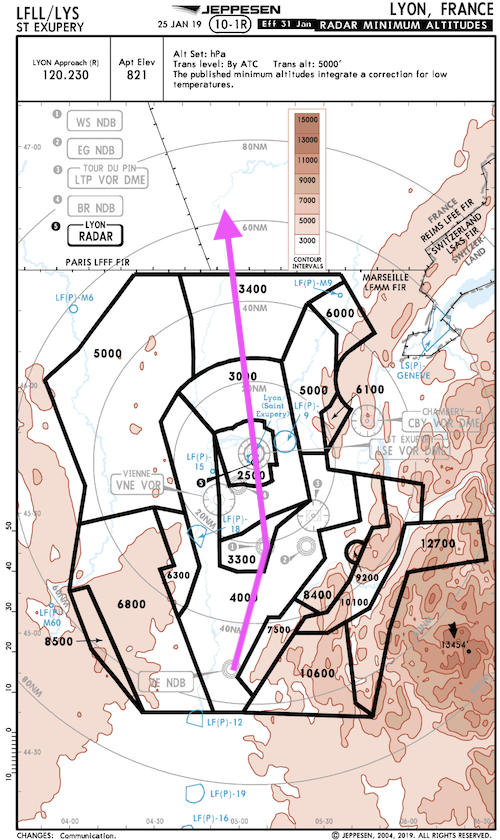
EDIT in response to Peter: for completeness here the relevant piece from the linked pdf:
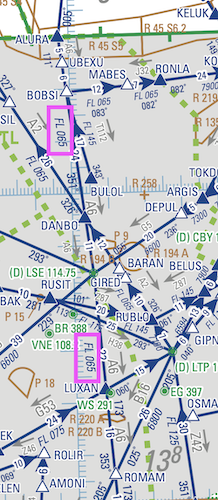
and if you’re interested in the full map, google ‘ENR 6.1 – CARTE CROISIERE ESPACE INFERIEUR.pdf’
ATC will allow more or less anything if you say there are icing conditions.
Also, in Europe, ATC mostly does not operate the semicircular rule.
BTW that PDF will not work for long because it has the AIRAC cycle in the URL, but I can’t upload it because it is too complex to pass the PDF validator.
FlyingDutchman wrote:
If we encounter a freezing level at FL70 (or even FL60) in IMC and we wanted to descend to 5000ft, would ATC approve it?
Without icing, I guess if you confirm you “have ground in sight”, ATC will approve but then you own terrain & navigation
With icing, in theory you “don’t have ground in sight” but as Peter said, it’s not like you or ATC have choice to go bellow MVA 
Still, I don’t think aircraft should go bellow MSA to avoid icing, +1000ft agl will make zero difference to ice, while having wings dirty is serious hitting terrain is no joke in comparison, I personally would stay in clouds until I decide to cloud-break for landing, worst case I go down when aircraft can’t stay up and hope for the best…
Okay that makes sense, thanks!
Regarding weather, vertical views often tend to just give a rough indication. If we would fly Sunday from LFMD to EDLS, the GRAMET suggests not much trouble, where as Flugwetter is suggesting quite some icing conditions along the route. Without oxygen and the quite low freezing level, it’s doesn’t seem like a great idea according to the Flugwetter graph. Would you fly this trip?

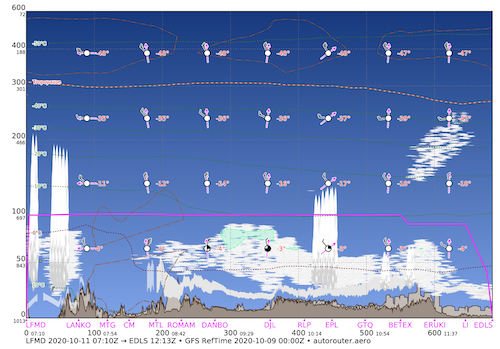
FlyingDutchman wrote:
would ATC approve it?
ATC won’t be the limiting factor here – and flight tactics depend strongly on the actual weather. I would personally only go below MSA in IMC if I know that by doing so I actually get out ice before I reach MVA/RMA (e.g. because I know I’m VMC down there). I would actually strongly consider not flying into the Rhone valley (or any valley) in IMC if I would expect Ice that I can’t escape by climbing. But again that is strongly depending on the actual weather.
The GRAMET is mostly fiction IME – except when it isn’t and then everybody says it was spot on 
GFS is not a great model for Europe, the plotting of where IMC is likely to be found is dodgy anyway, and the new ICON option is even worse; ICON is mostly totally wrong IME.
If you can show the route on a piece of a map, then people can look up the wx on the date/time. That generally produces a much better response than stating two ICAO codes 
I don’t know if any French military areas impact the route. IME, French ATC can get really “excited” (“aggressive” is a more correct term, with “the military controller is getting very angry” near the Bodeaux-Biarritz line, while I was avoiding CBs at FL190) if you enter one of these while avoiding wx.
Peter wrote:
If you can show the route on a piece of a map, then people can look up the wx on the date/time. That generally produces a much better response than stating two ICAO codes
Routing would be:
LFMD LANKO9K LANKO G7 MTG A6 MTL B16 ROMAM A6 DJL B37 KASON G21 RLP R11 EPL G21 GTQ N852 SUTAL DCT BETEX Z110 BITBU DCT ERUKI T856 DEPOK DCT LI DCT TURUX VFR EDLS
Flying Saturday (9th) or Sunday (10th) or separated over both days. Timing is flexible.
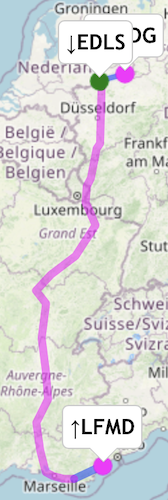
With nice wx conditions, I did before VFR at FL100 LFMD DCT LTP and thereafter picking up IFR continuing the above route to DJL (to prevent the massive deviation in IFR routing to the North via Marseille), but this seems not an option now.
I guess the season has started that non-turbo and no ice protection is becoming more of a limiting factor :)
Below pressure charts. It seems to be very windy in the South / Rhone Valley on Sunday; Windy.com: 5000ft 360 @~49kt, FL100 360 @~25kts and freezing level around 5000ft
Saturday:
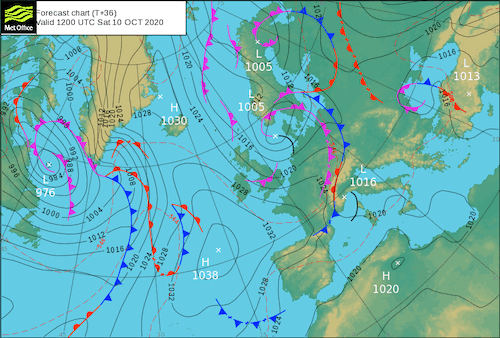
Sunday:

FlyingDutchman wrote:
It seems to be very windy in the South / Rhone Valley on Sunday; Windy.com: 5000ft 360 @~49kt, FL100 360 @~25kts and freezing level around 5000ft
So severe turbulences down low. Plus if the freezing level is forecast at 5000ft. I would at least expect freezing down to 4000ft – therefore the “flyable band” between MRVA and and freezing might become very slim for you…
Sunday looks better of the two:


However windy.com doesn’t show a really solid medium cloud layer (that’s the one normally relevant to light GA) nor low cloud layer. And no significant cloud tops.
It may well work fine. Windy though…
FlyingDutchman wrote:
Now I have a question regarding Minimum Vector Altitude (MVA) / Radar Minimum Altitudes vs the Minimum Enroute Altitude (MEA). Let’s say we were to fly the airway ROMAN A6 DJL, which shows MEA of FL065 till ALURA. If we leave out the semicircular rule, the first available cruise level would be FL70. If we encounter a freezing level at FL70 (or even FL60) in IMC and we wanted to descend to 5000ft, would ATC approve it? This would not be allowed according to the MEA, so I would not plan for this, but what if it happens? The MVA along this route segment would be sufficient.
For a purely regulatory standpoint – absolutely. The MVA is a safe IFR altitude and nothing prevents ATC from clearing you to that altitude.
The question is if the traffic situation permits it or if they can do it without complicated coordination. The MEA is frequently – for traffic management reasons – substantially higher than either of the MSA, MVA and floor of controlled airspace